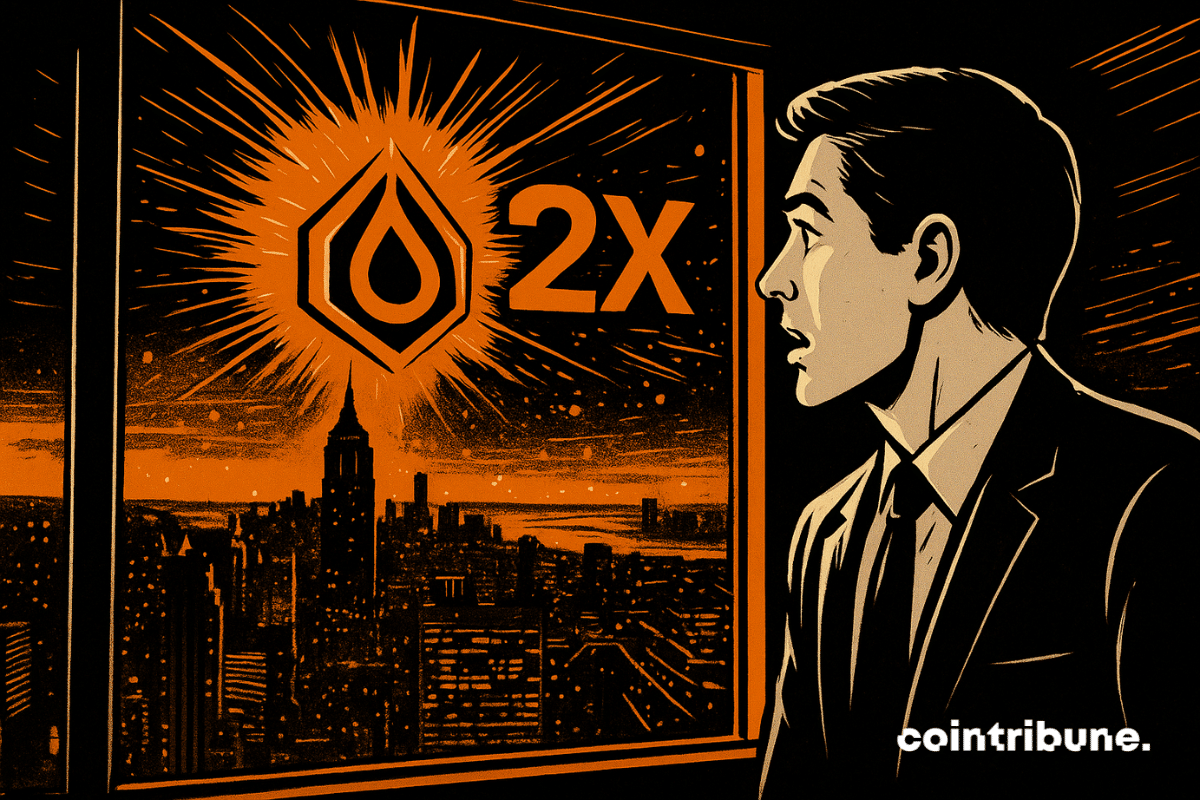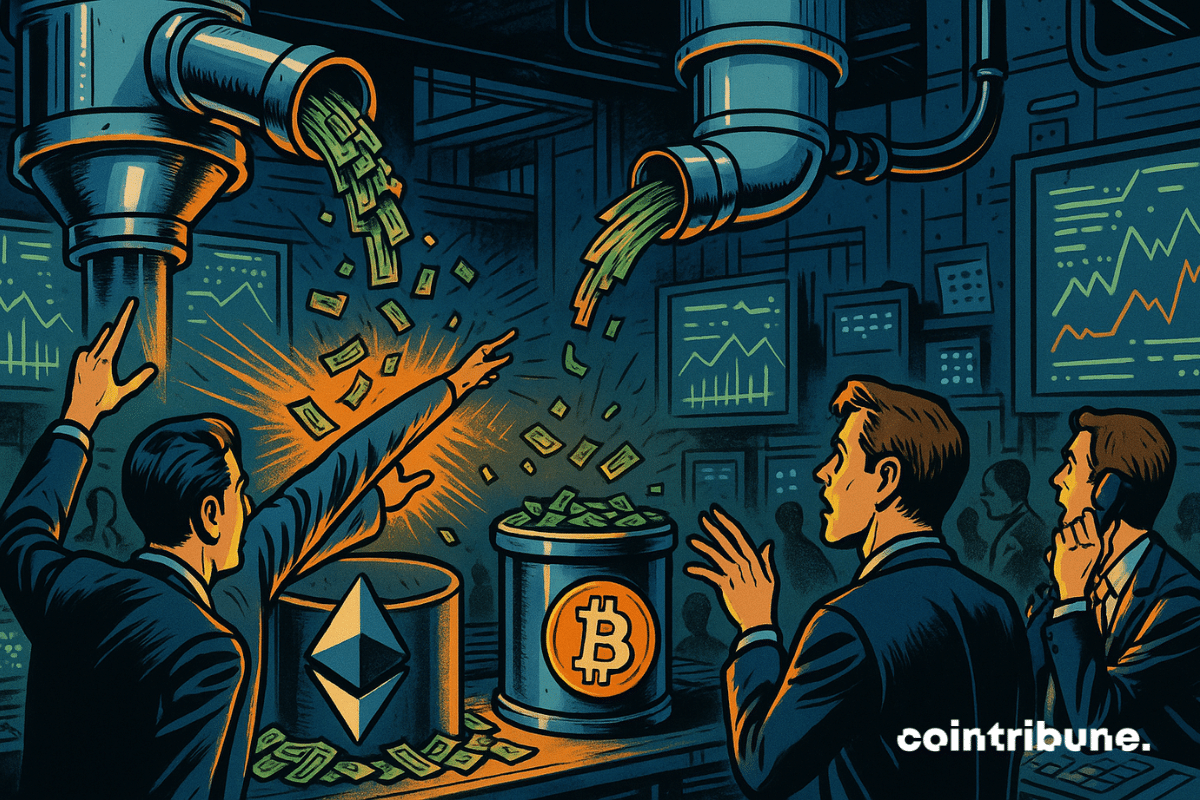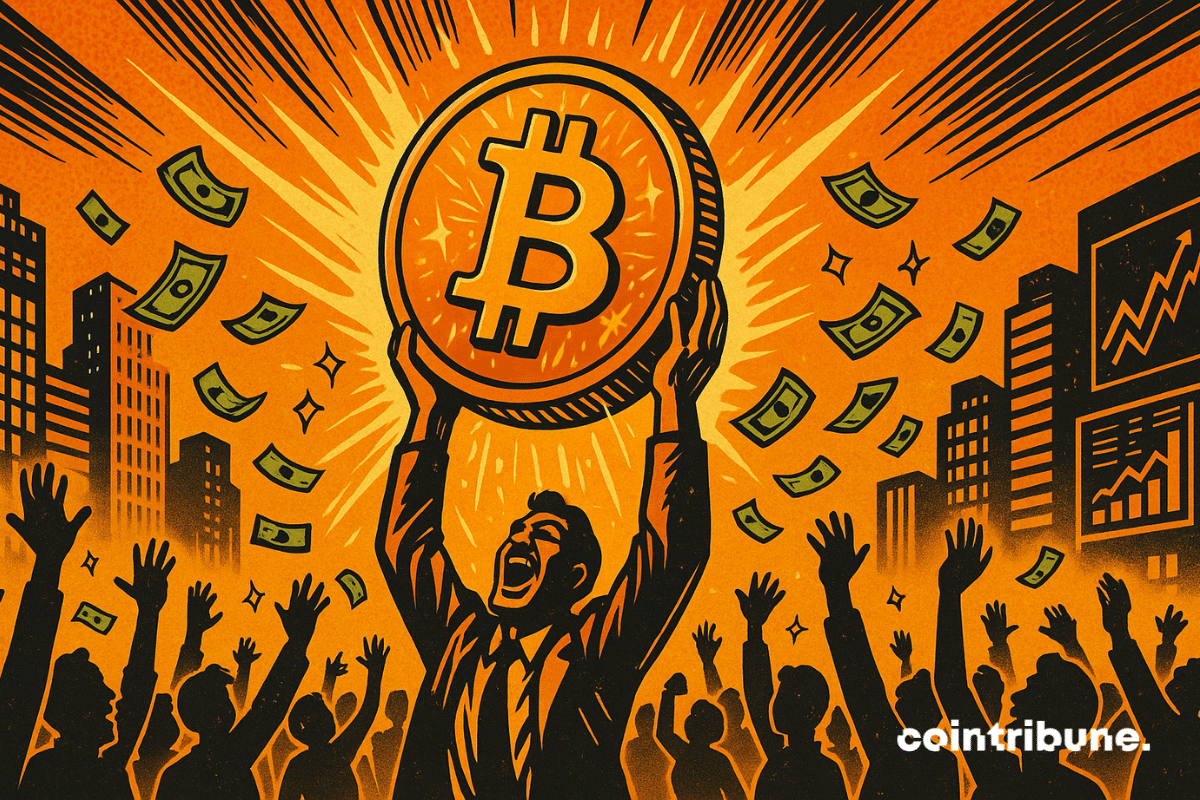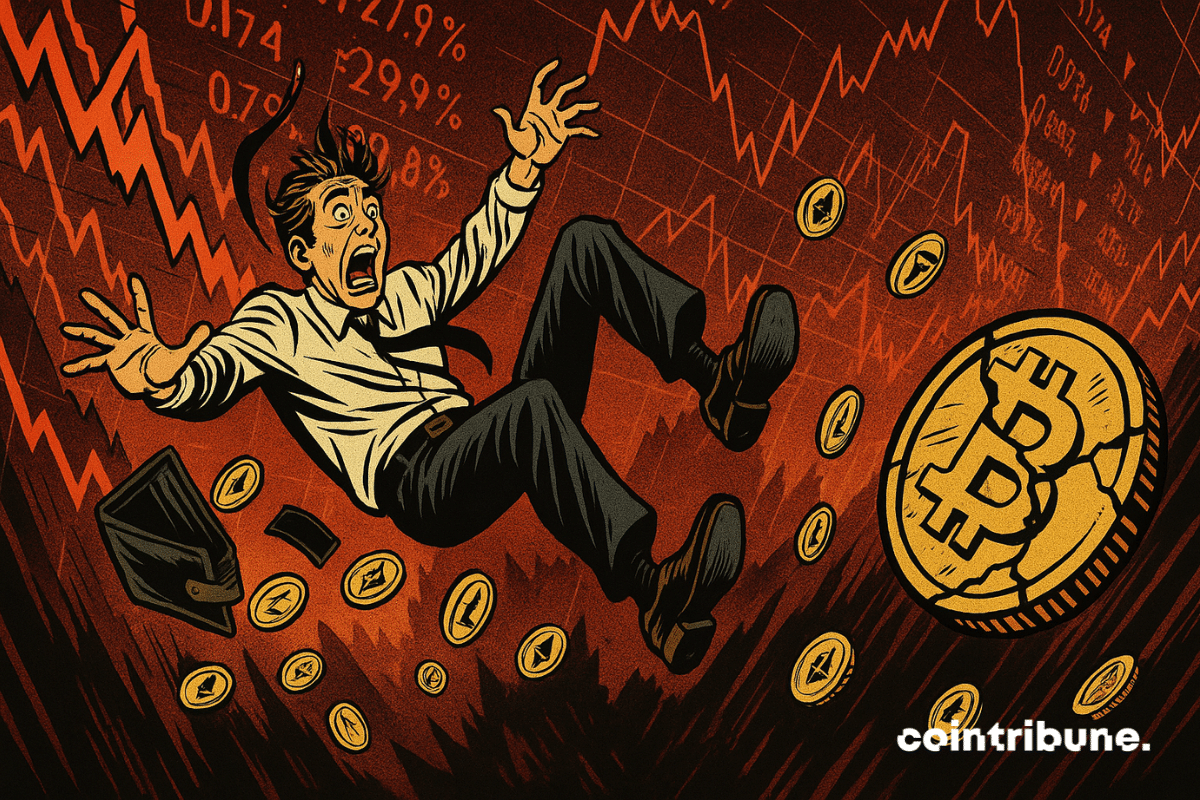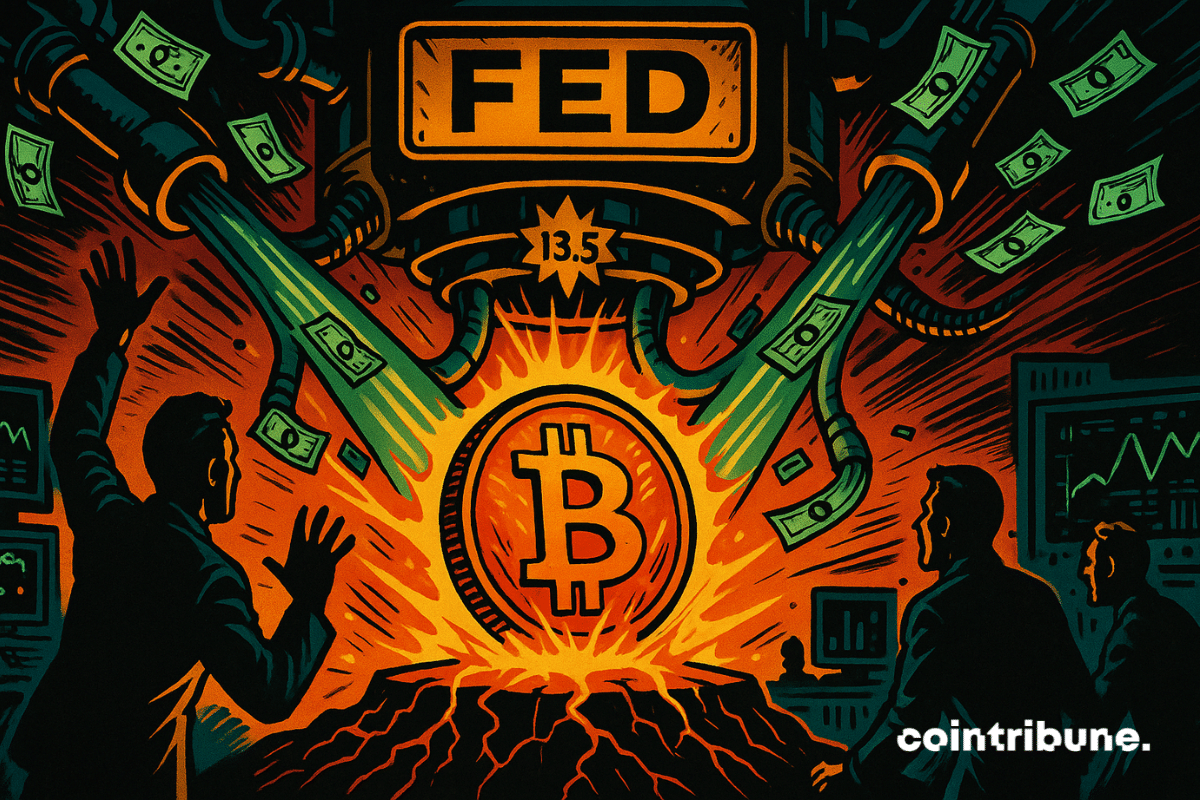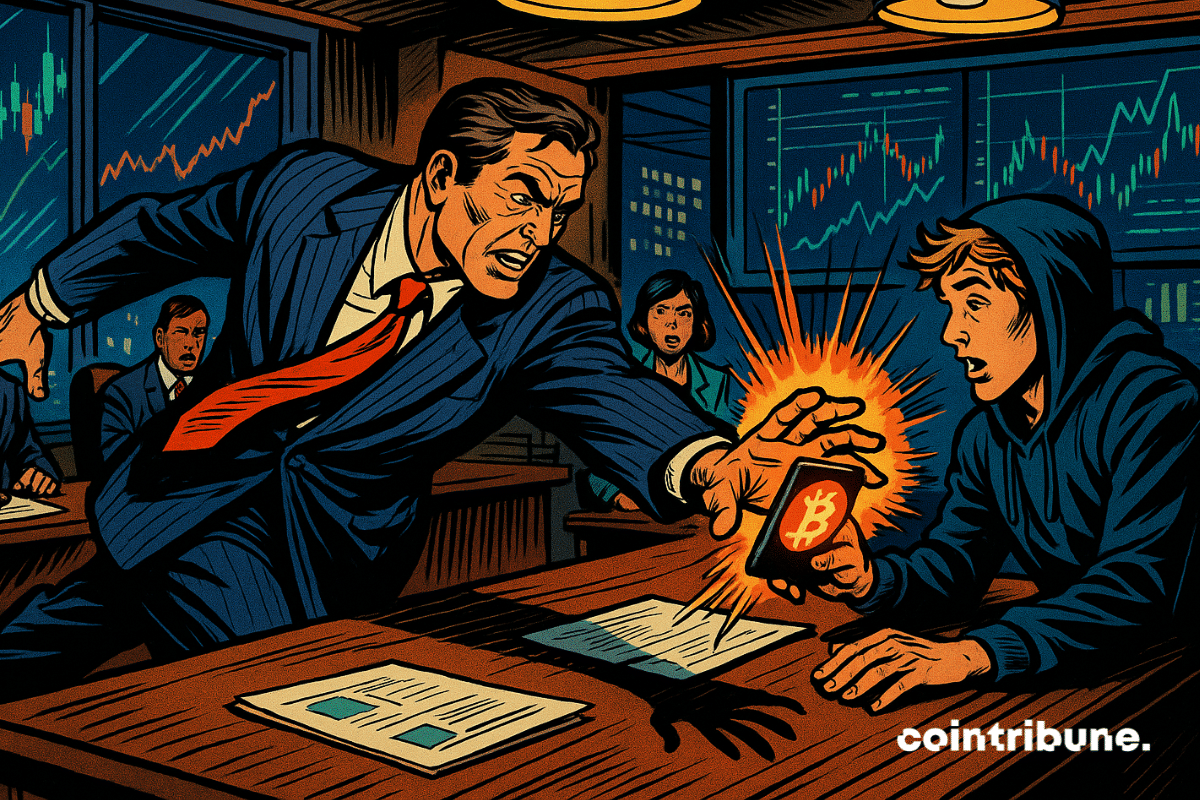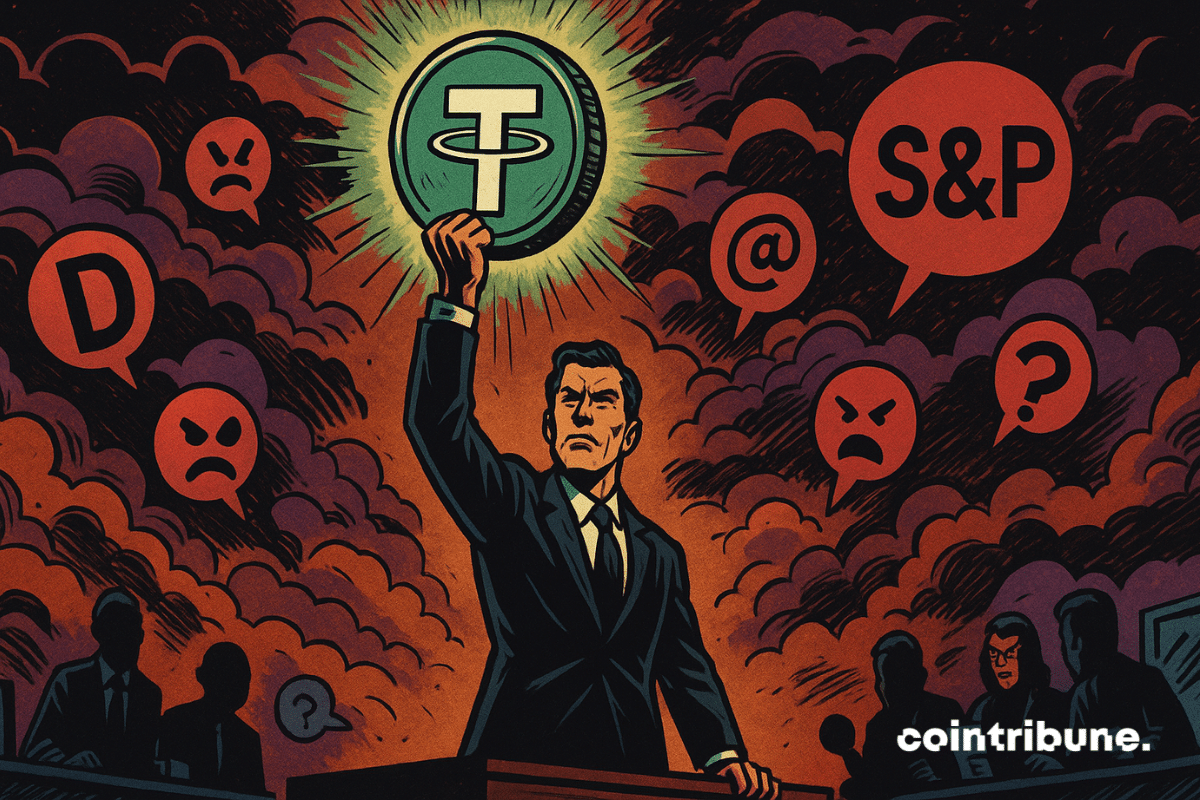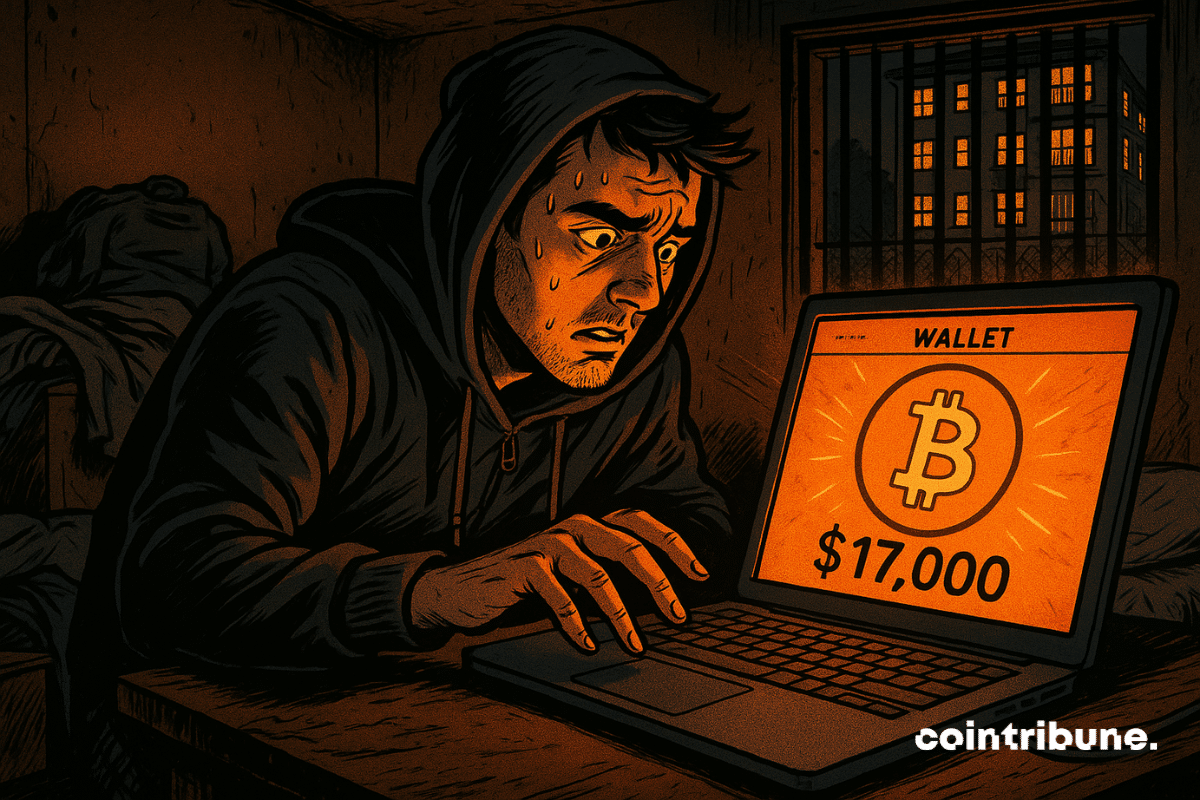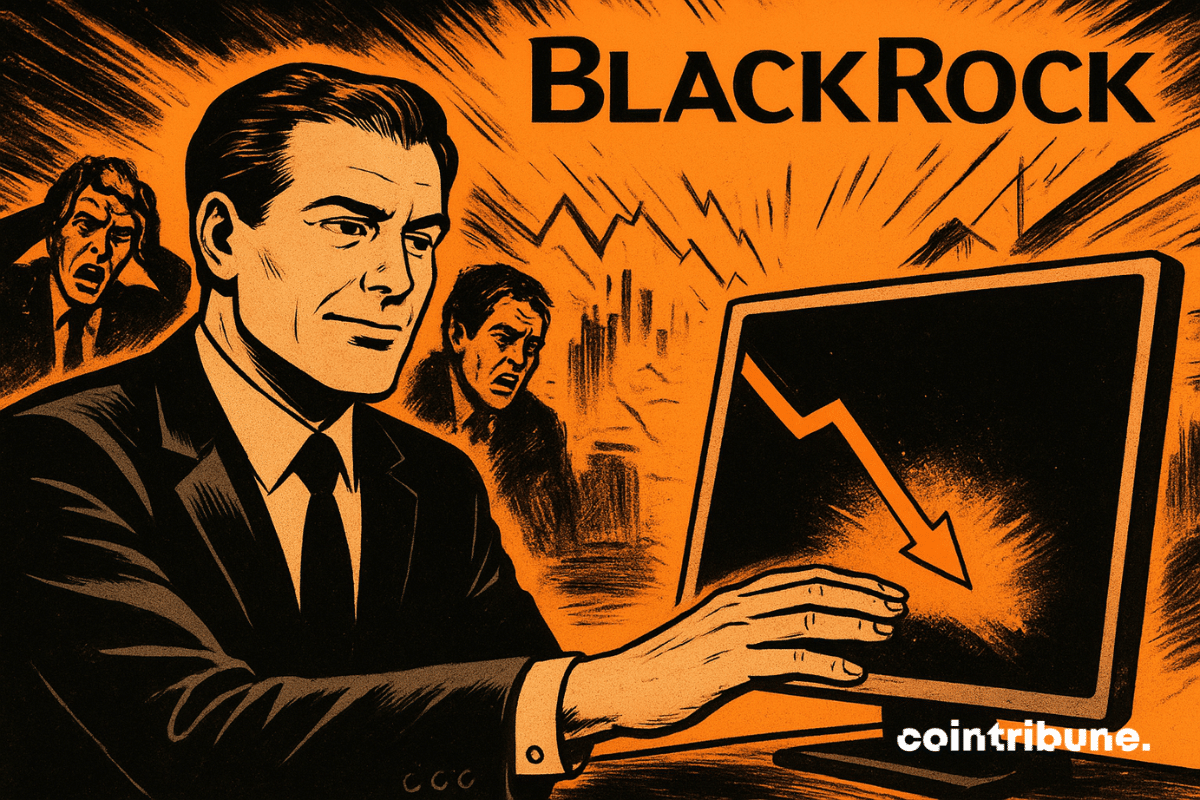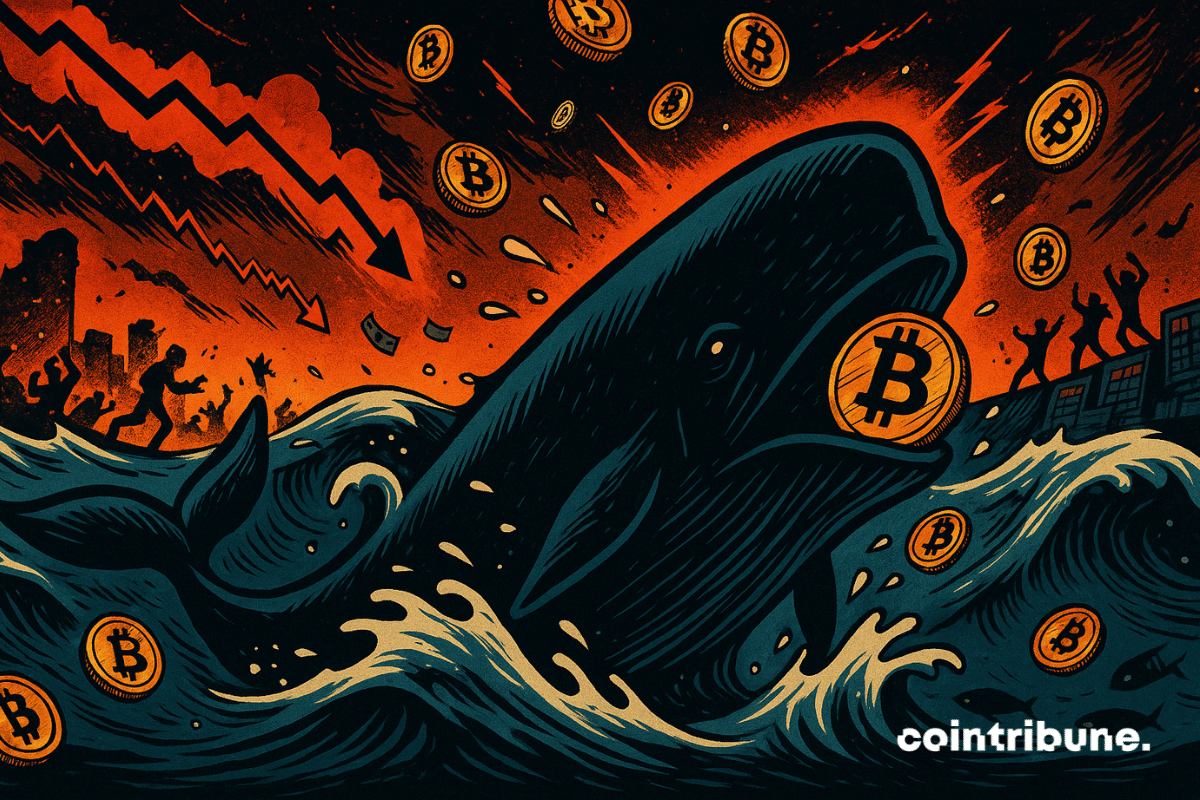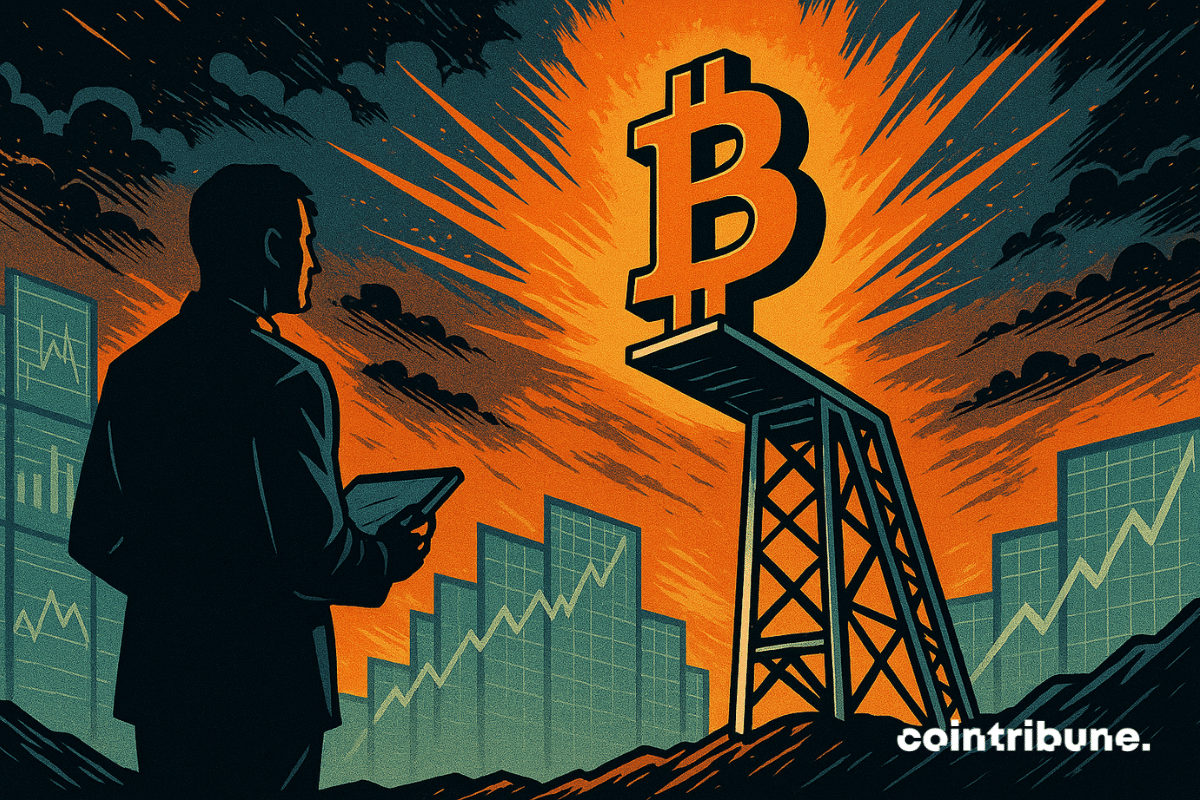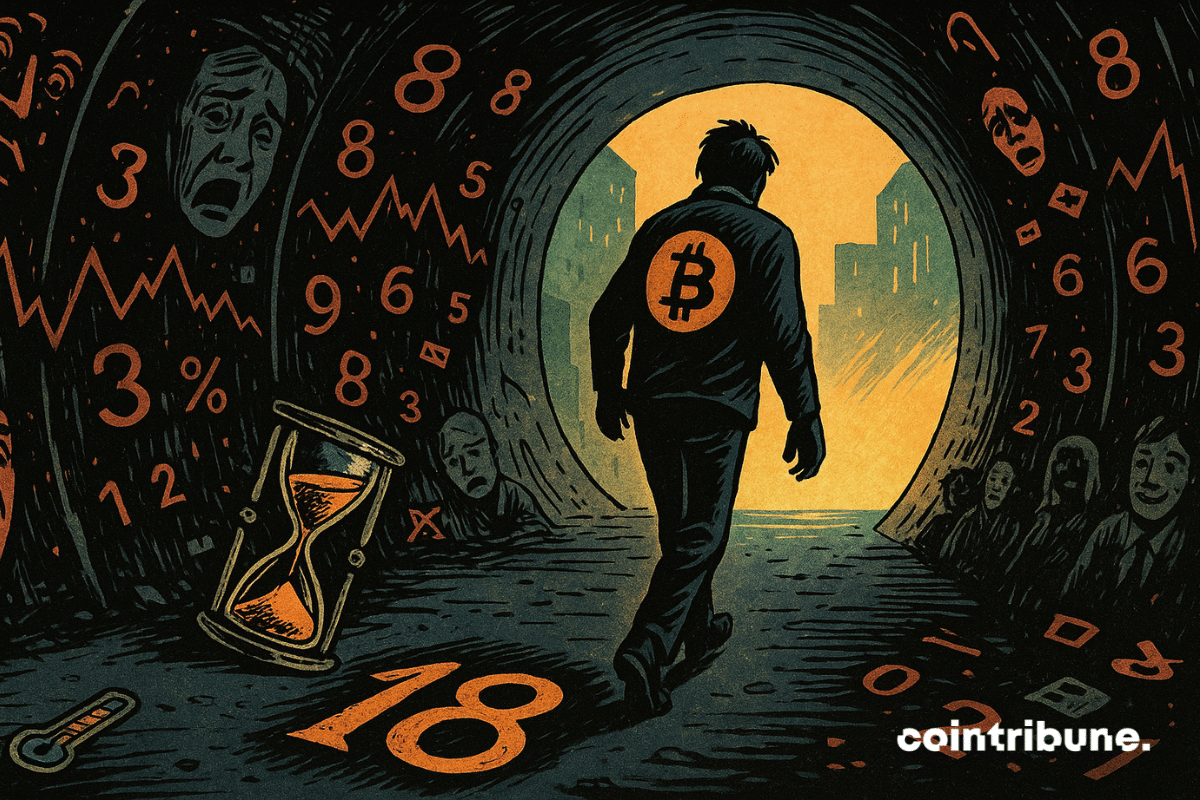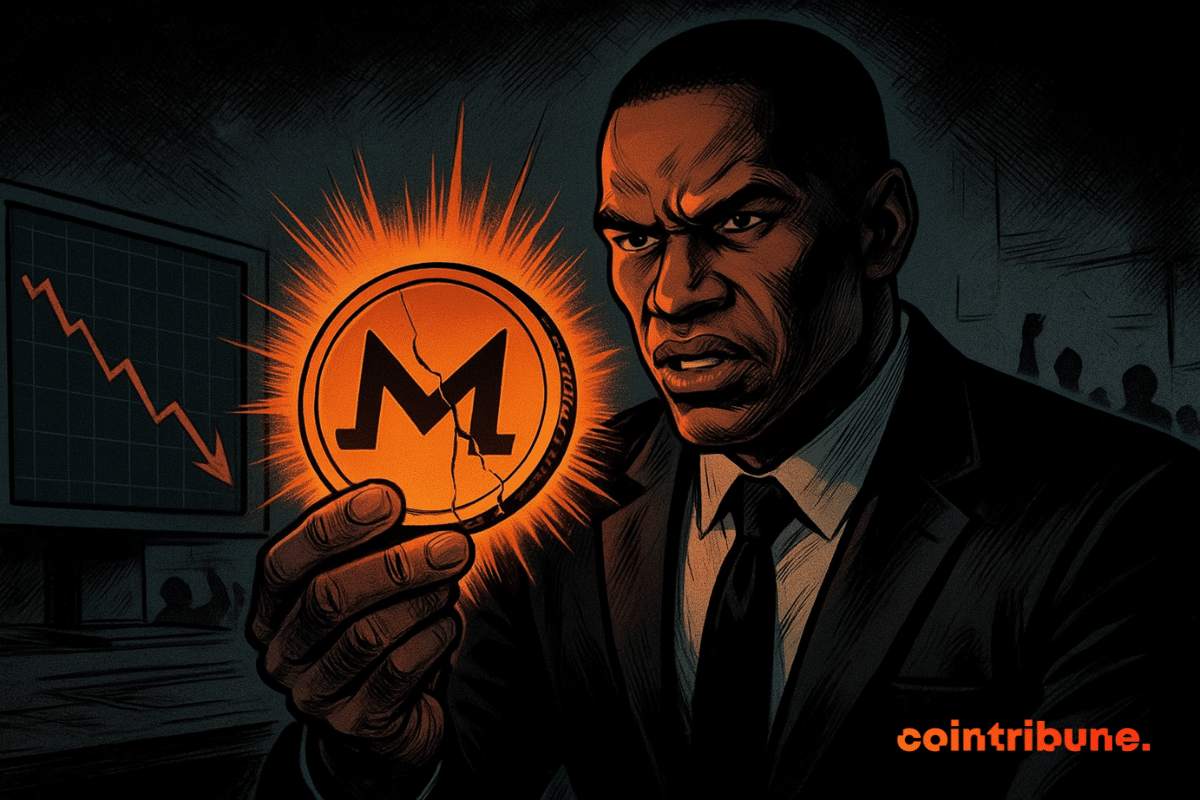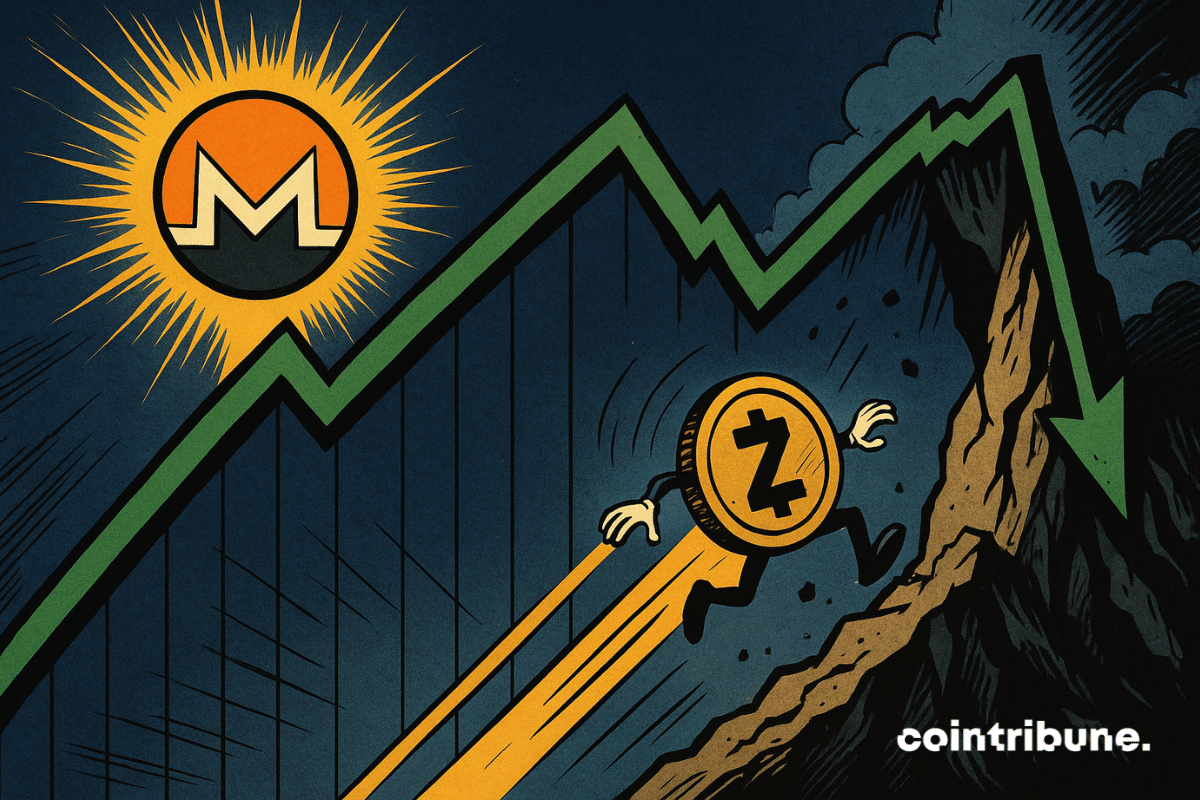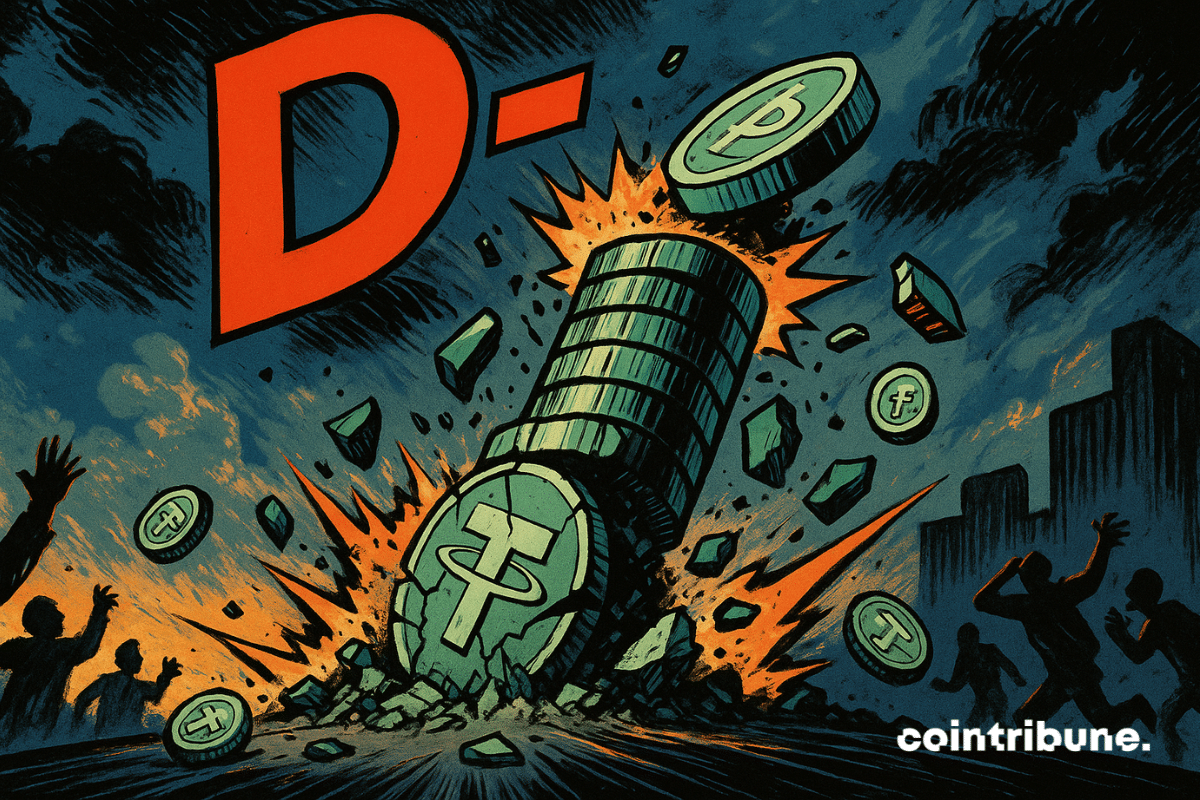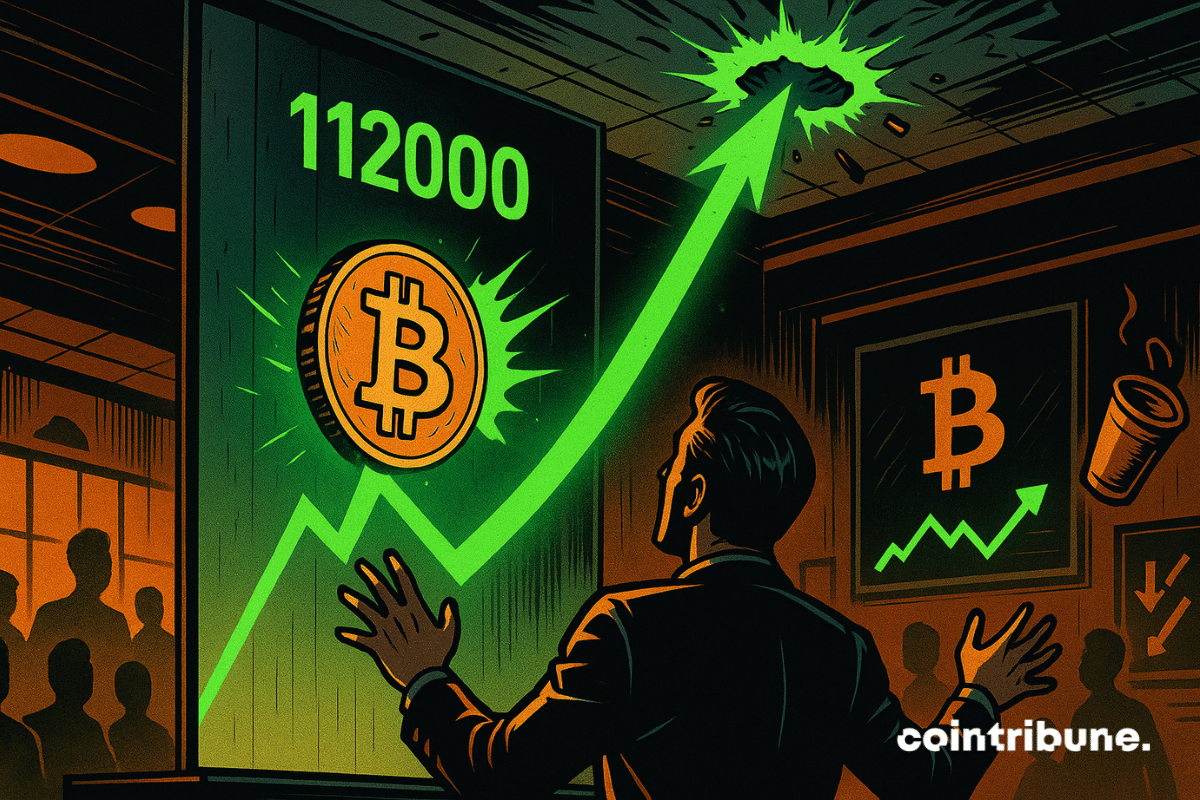The social sentiment around XRP has just dropped to its lowest level since October, according to Santiment data. The crypto is going through what the platform describes as a "fear zone." This emotional downturn contrasts with past movements, where similar phases had preceded a marked rebound. In a tense crypto market, XRP could once again surprise.
Theme Trading
Europe-based ETF issuer 21Shares has opened a new chapter for Sui-linked investment products in the U.S. after receiving approval to list the first exchange-traded product tied to SUI. The debut comes as crypto ETFs continue to roll out across major exchanges, attracting steady interest from both retail and institutional traders.
Supported by record inflows into spot ETFs and favorable technical setup, Ethereum quietly outperforms bitcoin. As flows shift and retail interest rises again, a turning point is happening. Is the trend changing permanently?
The sharp rejection of the $93,500 threshold this Thursday cooled the enthusiasm of a market seeking bullish confirmation. This level was expected as a symbolic pivot before a key Federal Reserve deadline. Far from a simple technical pullback, this retreat triggers doubts about BTC's ability to start a sustainable rally, in a climate where every economic figure weighs on monetary expectations.
Polymarket has entered a new phase of expansion as its US relaunch begins after years away from the domestic market. According to recent reports, the platform is moving quickly to bring waitlisted users into its updated app, starting with sports event contracts. Regulatory clearance arrived earlier this year, opening the door for a compliant return.
Bitcoin is changing dimension. For the first time since its creation, it is establishing itself as a pillar of institutional allocation. According to a joint analysis by Glassnode and Fanara Digital, $732 billion of new capital has been injected since the 2022 low, an absolute record surpassing all previous cycles combined. This massive flow does not reflect mere temporary euphoria but signals a structural market shift. Bitcoin is no longer merely speculative; it becomes a strategic asset in institutional portfolios.
Driven by the inflow of institutional capital, the crypto market seemed to stabilize. However, a wave of liquidations on derivative products highlights its fragility. According to Glassnode, these liquidations have nearly tripled, a consequence of excessive leverage now under strain.
Gold breaks records, global liquidity explodes, but bitcoin lags behind. This divergence raises questions: why does the flagship crypto asset, supposed to protect against monetary dilution, not react? A Bitwise report reveals an unprecedented valuation gap between BTC and money supply growth. Market error or major opportunity? The lines could move, and faster than we think.
Despite a cautious atmosphere in the crypto market, one asset captures the attention of institutional investors: XRP. Long weighed down by its regulatory troubles, the altcoin has triggered a spectacular resurgence of interest since the launch of several spot ETFs in the United States. Capital inflows continue at an unprecedented pace, revealing a possible turning point in the token's trajectory. Should this be seen as the signal of a new bullish cycle, driven both by traditional finance and encouraging technical signals?
Could bitcoin's four-year cycle be living its last moments? This is the unexpected hypothesis put forward by Grayscale in a report published on Monday. According to the asset manager, the crypto king could break free from its historical mechanics as early as 2026, reaching new heights well before the usual deadline. This major challenge to a pillar of crypto analysis sparks as much hope as questions in a rapidly changing market.
Goldman Sachs has agreed to acquire Innovator Capital for $2B, bringing new ETF and crypto-linked products, with the deal set to close in 2026.
After a month of massive disengagement, crypto investment products record a spectacular comeback. In a single week, crypto ETPs attract 1.07 billion dollars, breaking a series of four consecutive weeks of outflows totaling 5.5 billion $. This renewed interest marks an unexpected turning point in a highly uncertain monetary context, where markets scrutinize Fed signals.
In the derivatives market, a milestone has just been reached. For the first time, Ether (ETH) futures contracts have generated more volume than those on bitcoin (BTC) on the Chicago Mercantile Exchange. This reversal occurs in a climate of high volatility, reflecting a marked repositioning of institutional players. Such an overtaking could then signal a deeper change in the balance between the two main assets.
The stability of the market's largest stablecoin is questioned. On November 29, the S&P agency downgraded USDT's ability to maintain its dollar peg. Tether, through its CEO Paolo Ardoino, denounces a biased analysis and defends its figures. This standoff between a central crypto player and a major financial institution reignites the debate on reserve solidity and trust in the ecosystem.
When bricks soar, young people bet on the virtual: crypto becomes their plan B... Or their programmed ruin? A risky bet from a disillusioned and downgraded generation.
What if Ethereum was worth much more than the market thinks? According to a study conducted by CryptoQuant, 9 valuation models out of 12 estimate that ETH is currently largely undervalued. For Ki Young Ju, CEO of the platform, these analyses reveal a significant gap between the current price of Ether and its real theoretical value. This finding rekindles the debate on how cryptos should be valued.
Bitcoin ends this year on a familiar note. Down more than 36% from its annual highs, the asset eerily replicates the movements of the 2022 bear market. This correlation alarms analysts as crypto ETFs register positive inflows again. Between the return of institutional capital and memories of a previous crash, the market oscillates between concern and hopes of a rebound.
Heavy withdrawals hit BlackRock’s flagship Bitcoin ETF in November, but company executives say the activity reflects normal market behavior, not a shift in long-term sentiment. Momentum from earlier in the year continues to guide the firm’s outlook, supported by the strong demand that once pushed IBIT toward a major milestone.
The crypto market gave way under the pressure of its own leverage. In a few days, nearly 8 billion dollars of open interest on Bitcoin futures contracts were liquidated, triggering a brutal purge of speculative positions. Behind this shock, a rebalancing is emerging, suggesting that a stabilization cycle could begin.
While the Bitcoin market remains under pressure, an analyst suggests that the bottom may have been reached. Contrary to the climate of distrust, he envisions a rebound towards 100,000-110,000 dollars, reigniting speculation about a trend reversal. This scenario, based on precise technical indicators, contrasts with the prevailing sluggishness and captures investors' attention.
After 18 days in the extreme fear zone, the crypto market shows a first sign of relief. The Crypto Fear & Greed Index rises slightly, finally leaving its lowest level. This rebound occurs while November, traditionally favorable to Bitcoin, ends in uncertainty.
Arthur Hayes is stirring debate across the crypto market with sharp criticism of Monad, a new layer-1 chain that launched with significant attention and industry backing. His remarks challenge the project’s early momentum and raise broader questions about high-valuation tokens supported by venture capital.
What if the market was massively wrong about bitcoin? For André Dragosch, head of research at Bitwise Europe, the current context oddly resembles that of March 2020, during the crash caused by the pandemic. In a tense post-halving climate and facing contradictory macroeconomic signals, he believes bitcoin today offers one of its best risk/reward profiles since the health crisis. This statement shakes certainties and reignites the debate on the timing of market entry.
Monero (XMR) gained more than 23% this week, while Zcash (ZEC) dropped by nearly 25%. Such a gap highlights the high volatility of the privacy coins market, in a context of low activity related to Thanksgiving. This divergence between two key privacy assets raises questions about the internal dynamics of the sector.
BitMine is drawing fresh attention as its aggressive buying spree in Ethereum continues. New on-chain activity suggests the company may be preparing another significant purchase, prompting traders to watch whether continued accumulation can steady sentiment in an uneven market. Interestingly, BitMine’s recent purchase activity comes amid broad macro pressures that remain a persistent drag on digital assets.
S&P Global Ratings has just downgraded USDT to its lowest stability level. A rare decision targeting the world’s most used stablecoin and raising doubts about its ability to maintain its peg to the dollar. At a time when regulators are tightening the noose around cryptos, this evaluation revives debates on the solidity of Tether’s reserves and the systemic risks stablecoins pose to the entire market.
Bitcoin has fallen more than 22% in one month, casting doubt on its momentum. Yet, behind this pullback, several signals point to a possible return to the symbolic threshold of $112,000. While markets are restless, institutional and retail investors watch four key factors likely to revive the bullish trend. In a context of macroeconomic uncertainty and tension in derivative markets, the scenario of a rebound can no longer be ruled out.
The US Federal Reserve could well be starting a decisive turning point. According to the latest data from the CME FedWatch Tool, markets now estimate an 85% probability of a rate cut as early as December. A rapid development, which contrasts with the firmness displayed in recent months. If this scenario is confirmed, it will mark the end of an unprecedented monetary tightening cycle and could disrupt the balance of financial markets.
This November 20 marks an unprecedented turning point in American budget history. Texas has become the first state to officially integrate bitcoin into its public reserves. At a time when fiat currencies are wavering and institutions are seeking solid alternatives, this decision stands as a strong signal. The Lone Star State paves the way for a new form of financial sovereignty, placing the flagship asset at the heart of its long-term economic strategy.
While bitcoin briefly rises above $86,000, a dissonance persists: the US dollar remains strong. This strength, usually unfavorable to risky assets, has not hindered BTC's upward momentum. Is it a real sign of recovery or a mere technical rebound masking underlying weaknesses?

